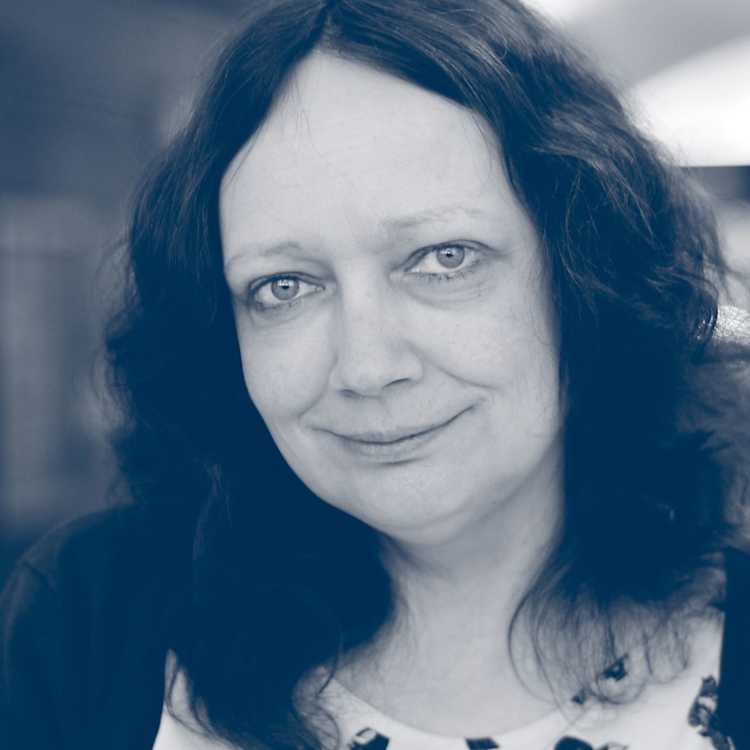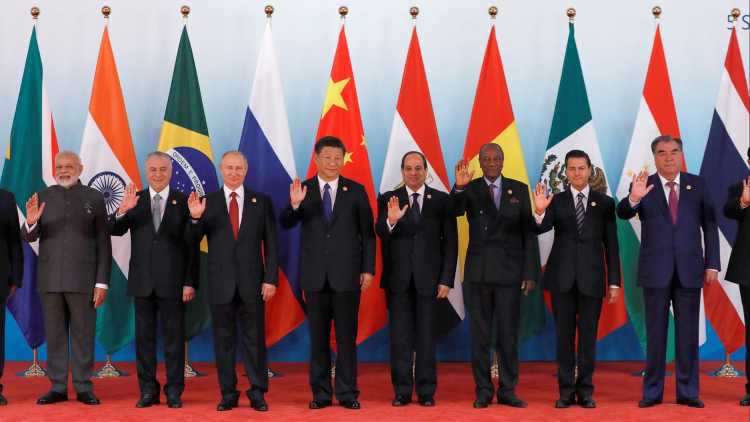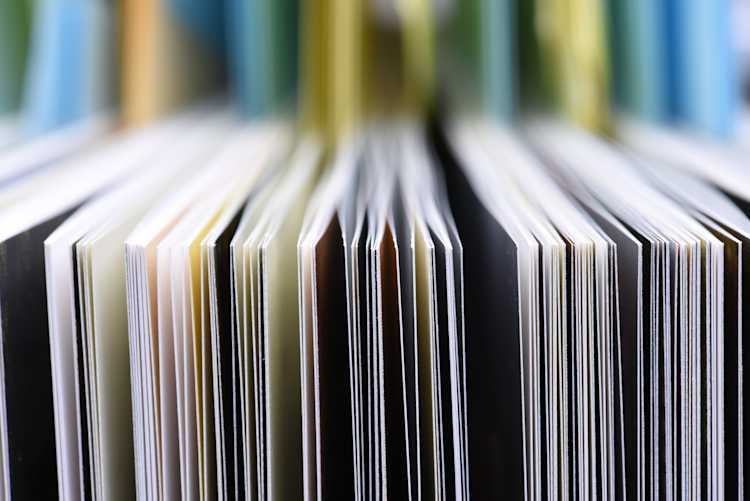- Startseite
- Publikationen
- GIGA Focus
- Yet Another Scramble: Why Middle Eastern Powers Are Reaching Out to Africa
GIGA Focus Nahost
Ein weiterer Wettlauf: Warum sich nahöstliche Regionalmächte in Afrika engagieren
Nummer 5 | 2018 | ISSN: 1862-3611

Das jüngste Engagement Irans, Saudi-Arabiens und der Türkei am Horn von Afrika hat Befürchtungen geweckt, dass sich der nahöstliche Hegemonialkonflikt auf eine weitere Region mit großer geostrategischer Bedeutung ausweiten könnte. Das Interesse dieser drei Staaten an Afrika ist jedoch weder neu, noch ist es auf das Horn beschränkt. Um mögliche Folgen des Ringens um Einfluss in Afrika richtig einschätzen zu können, ist es daher notwendig, die unterschiedlichen dahinter stehenden Gründe zu verstehen.
Der Aufbau von Beziehungen zwischen den nahöstlichen Regionalmächten und Afrika begann bereits vor mehreren Jahrzehnten. Der Iran intensivierte seine Beziehungen infolge der Sanktionen, die dem Regime nach der Islamischen Revolution 1979 auferlegt wurden. Die türkische Afrikapolitik nahm mit dem Regierungsantritt der Partei für Gerechtigkeit und Entwicklung (AKP) an Fahrt auf. Saudi-Arabien knüpfte erste diplomatische Kontakte mit Afrika im Kontext des arabisch-israelischen Krieges von 1967, entdeckte sein strategisches Interesse am Kontinent jedoch erst kürzlich wieder neu.
Ungeachtet der Tatsache, dass die jeweilige Afrikapolitik der drei Regionalmächte des Nahen Ostens stets auch von spezifischen Interessen geprägt war, bestand das Hauptinteresse Ankaras, Riads und Teherans an Afrika lange Zeit vor allem in wirtschaftlichen Gewinnen sowie im Rekrutieren afrikanischer Staaten als internationale Verbündete.
Im Gegensatz zum früher regelmäßig wiederkehrenden strategischen Desinteresses an der Region betrachten Iran, Saudi-Arabien und die Türkei Afrika heute als zentral zur Erreichung ihrer politischen Ziele im Nahen Osten. Ihr Ringen um Einfluss am Horn von Afrika sowie die zunehmende Militarisierung des Roten Meeres sind nur zwei der sichtbarsten Anzeichen dafür.
Fazit
Die Politiken Irans, Saudi-Arabiens und der Türkei werden zukünftig einen wichtigen Einfluss auf politische Entwicklungen in Afrika haben. Insbesondere im Bereich Sicherheits- und Migrationspolitik stehen sie im Widerspruch zu den Zielen europäischer Außenpolitik. Die EU sollte sich bewusst darüber sein, dass sich Ankara, Riad und Teheran in Afrika als nützliche Alternative zur EU zu präsentieren wissen. Europäische Akteure müssen daher darauf bedacht sein, ihre belasteten Beziehungen zu afrikanischen Partnerstaaten zu verbessern.
The New Turn to Africa
During most of the post-World War II period, Africa and the Middle East have commonly been seen as two distinct regions separated less by geographic distance than by mutual neglect. To all appearances, this reciprocal ignorance has come to an end. This can be observed most clearly on the African coast of the Red Sea, where Middle Eastern states are currently taking over a series of strategic ports for commercial or military purposes. Likewise, it is here that Middle Eastern spats have already reverberated to such an extent that the African Union discussed the spilling over of Middle Eastern conflicts to its shores in January 2018.
The Red Sea has indeed experienced notable militarisation as of late. Besides the permanent members of the UN Security Council, which have already established military bases in the region or are planning to do so, the Middle Eastern states are now also emerging as regional military players. Egypt, Iran, Israel, and Qatar obviously have a stake in these developments, while Saudi Arabia, Turkey, and the United Arab Emirates (UAE) seem to be bent on becoming key actors in the Greater Horn of Africa and are constructing a series of military bases from Sudan to Somalia.
Yet the debates about the militarisation of the Red Sea obscure the fact that Africa as a whole has become a region of increasing interest to these and other Middle Eastern states. Each state has its own history of relations with Africa. While prospective economic benefits and international prestige have long dominated their agenda, present-day dynamics are heavily driven by the struggle for hegemony in the Middle East.
This paper focuses on the policies of Iran, Saudi Arabia, and Turkey, which, as the dominant regional powers in the Middle East, are at the centre of the Middle Eastern hegemonic conflict and the Middle Eastern states’ activities in Africa. On the one hand, their turn to Africa exemplifies how their foreign policies have become more assertive on the international stage, especially regarding South–South relations. On the other hand, however, their current strategic approaches to the continent, and their politics of alliance-building there, closely follow the logics prescribed by the conflict dynamics in their home region.
An Unsteady Evolution of Relations
Although Ankara, Riyadh, and Tehran frequently stress the historic and cultural depth of their centuries-old relationships with Africa, the forging of diplomatic ties with post-colonial African nation states is a relatively recent phenomenon.
Iran’s Foreign Policy toward Africa after the Islamic Revolution
Iran first reached out to the continent’s decolonising states in the 1950s. Still under Pahlavi rule, it sought to use its Africa policy mainly to contain communism by supporting the economies of “moderate” states such as Ethiopia, Senegal, Somalia, Sudan, and Zaire. By 1976, on the eve of the Islamic Revolution, Iran had established bilateral relations with 31 African states (Nouhou 2014: 142). The emergence of the Islamic Republic altered the country’s approach to these states, increasing their importance to Tehran in many ways.
After the Islamic Revolution in 1979, Iran was diplomatically isolated across large parts of the globe, including the Middle East. Africa provided an opportunity to break the isolation politically and economically. With international sanctions imposed on Tehran, the continent gained in importance as a market for exports, particularly crude oil, and provided access to raw materials. Poverty across large parts of the continent, in turn, opened the door to Iranian influence in many states, especially in the Sahel, despite Tehran’s limited monetary means. Besides direct military and financial aid, development assistance distributed via Construction Jihad (Jahad-e Sazandegi), an organisation that was created in the wake of the revolution and later merged with the Ministry of Agriculture, was a major tool for gaining a foothold. Missionary activities were another. These were often conducted via Iranian-financed cultural centres or schools, both in countries with significant Shiite minorities such as Ghana or Nigeria and in those with Sunni majorities such as Mali or Senegal.
Altogether, the Islamic Republic’s involvement in Africa has fluctuated in scope and intensity over time, depending on the international pressure on Tehran as well as the foreign policy orientations of its leadership (Lob 2016). It was strongest during President Ahmadinejad’s tenure, when, due to the conflict over its nuclear programme, Tehran was in need of international partners, which it sought in the Côte d‘Ivoire, Lesotho, Mauretania, Namibia, and South Africa, a non-permanent member of the UN Security Council from 2007 to 2008. States with notable uranium deposits, such as Malawi, Niger, Sierra Leone, Togo, and Uganda, became another focal point under Ahmadinejad – as did African “rogue states” such as Sudan or Eritrea, mostly because of their geostrategic location.
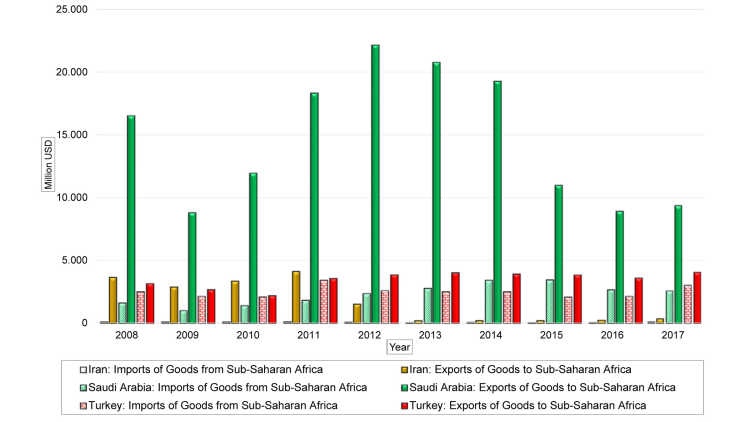
During President Rouhani’s first term (2013–2017), Iran’s engagement in Africa abated. With the international nuclear deal in the offing, the continent’s political and economic importance to Iran decreased considerably. Iranian trade figures provide a clear indication of this. Paradoxically, it was at approximately the same time that Saudi Arabia began to rediscover its strategic interest in Africa, after a prolonged period of outright strategic neglect.
Saudi Arabia’s Africa Policy: Faysal, Hiatus, and Mohammad bin Salman
The beginnings of Saudi Arabia’s Africa policy date back to King Faysal (1964–1975), who is credited with having established the bulk of diplomatic relations with African states in the aftermath of the 1967 Six-Day War in an effort to isolate Israel. Faysal is thus deemed responsible for the first coherent policy toward the continent, which was, however, abandoned soon after his death. This is not to say that Riyadh was ever completely absent from the continent. The kingdom has always sought to secure its vital interests in its immediate neighbourhood – that is, the (Greater) Horn of Africa, and especially Somalia, where it backed the US in containing the USSR during the Cold War and, later, attempted to bring about agreements among warring factions in the first decade of this century.
Apart from being export markets for crude oil and hydrocarbon products, African states’ role in food security was another reason why some of them remained on the Saudi agenda. When prices for staple foods doubled on the world market in 2007, the kingdom, via the Agricultural Development Fund, launched the King Abdullah Initiative for Saudi Agricultural Investments Abroad, providing subsidies to Saudi companies prepared to invest in foreign farmland. At that time, Saudi agricultural investments had already been initiated in Sudan, Ethiopia, Tanzania, Uganda, South Africa, Senegal, Mali, Kenya, and Niger.
Africa was also affected by Wahhabi proselytisation. Yet compared to other world regions, African states have not been at the centre of Saudi attention in this respect for a long time. Although Riyadh has invested large sums in the building of educational infrastructure in, for instance, West Africa, as well as in the training of African scholars in the kingdom, the Saudi factor is just one among many responsible for the surge of local jihadism (Sounaye 2017). Given that proselytisation, as well as the direct support of Islamist groups abroad, is often seen as a major Saudi foreign policy tool, such comparatively limited efforts suggest that Africa was far from a top priority for Riyadh.
Saudi Arabia rediscovered its strategic interest in Africa in the wake of the Arab uprisings in 2011, chiefly out of fear of Iranian encroachment on the continent. Saudi embassies in Africa had already warned Riyadh of the increasing proselytisation of local Iranian cultural centres, demanding Saudi political responses (Raymond and Watling 2015). Yet it took some years before Riyadh also funnelled commensurate resources to back its new strategic interest. Still, in 2013 a report by the General Department for African States in the Saudi Ministry of Foreign Affairs lamented that Saudi embassies in Africa were ill-equipped and unable to counter Iranian moves, let alone China’s advances to Africa (Wikileaks n.d.). In fact, the country’s new focus on Africa only became visible in 2015. It thus coincided with the coming to power of Muhammad bin Salman, the crown prince and de facto leader of the kingdom, and the beginning of the war in Yemen.
The Saudi-led military campaign against the Houthis in Yemen, whom the kingdom considers to be Iranian proxies, drastically altered the geostrategic importance of the Horn of Africa in the eyes of Riyadh – and of Abu Dhabi, Riyadh’s main Gulf ally and crucial partner in this war. Although the UAE has become one of the most active external actors on the continent in its own right, with major economic stakes in Africa, it appears that Abu Dhabi has so far been closely coordinating its policies with Riyadh. Because Saudi Arabia and the UAE are ultimately pursuing their own interests in Africa, it is fair to assume that conflict dynamics in the Middle East, and the war in Yemen in particular, have facilitated the building of common ground, especially on the African shore of the Red Sea.
In the past four years, Riyadh and Abu Dhabi have made great efforts to upend Iran’s relations with Sudan, Eritrea, Ethiopia, Djibouti, and Somalia. These efforts were largely successful at first, as the bulk of the above-mentioned states lessened their ties with Tehran, making it more difficult, for instance, for Iranian vessels to navigate the Red Sea. Also, the UAE now runs military bases in Eritrea (Assab) and Somaliland (Berbera), and Saudi Arabia is about to open its first military base in Djibouti. Yet the conflict constellations in the Red Sea are complex and rapidly shifting, and the recent diplomatic tensions between Riyadh and Abu Dhabi on the one hand and Djibouti, Sudan, and Somalia on the other have opened up space for regional competitors, including Turkey, to regain influence in the Horn.
Turkey: Africa’s New Best Friend?
Turkey has been struggling to extend its clout in the regions adjacent to the Middle East for the past two decades. While Turkey’s initial interest in Africa dates back to the coalition government under Prime Minister Bülent Ecevit (1999–2002), Turkish relations with African states intensified with the coming to power of Recep Tayyib Erdoğan, who in 2005 launched Turkey’s official “Opening to Africa” policy. Despite being a relative newcomer, Ankara rapidly gained on Riyadh and Tehran, and today self-confidently presents the fruits of its efforts in government fact sheets (Demirci and Mehmet 2018).
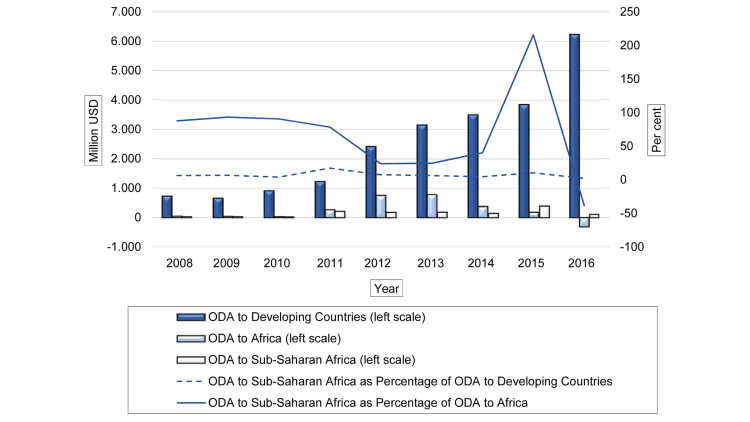
The figures are certainly telling. For instance, the number of Turkish embassies in Africa has risen from 12 in 2009 to 40 in 2018. Turkey’s bilateral trade with African countries reached a volume of USD 18.8 billion in 2017, marking a three-fold increase since 2003, whereas Turkish investments are estimated to have surpassed USD 6 billion by early 2018. The Justice and Development Party (AKP) government also dwells on its increased official development assistance to African countries or on Erdoğan, who has visited 23 African states 39 times, as “the leader who visited Africa the most in the world” (_Daily Sabah_2018).
Notwithstanding the Turkish media’s proclivity to depict Erdoğan as Africa’s best friend, however, Turkey’s policy toward the continent is not altruistic. Ankara’s Africa policy in the first decade of this century was mainly motivated by the prospect of economic gains and political visibility in international affairs (Korkut and Civelekoglu 2013). Such strategic concerns seem to have become even more pressing over the past few years. Africa’s economic potential surely remains a driving force behind its “Opening to Africa,” but it is not the sole explanation for Ankara’s recent advances. In fact, Turkish exports to sub-Saharan states have stagnated in the past few years, whereas Turkish investments have concentrated chiefly on North Africa. While Erdoğan’s latest visits to Africa may thus have aimed to push the Turkish economy, they have also served to strengthen political relations with new allies following Turkey’s falling-out with the EU and the escalation of Middle Eastern power struggles.
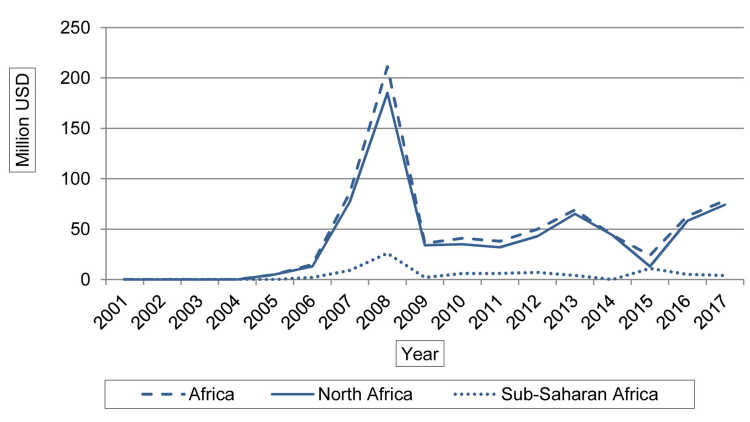
Middle Eastern Rivalries beyond the Middle East
We thus have a mixed bag of reasons accounting for past periods of Iranian, Saudi, and Turkish engagement, or disengagement, in Africa. Besides being targets for proselytisation, which has chiefly been conducted by Tehran and Riyadh and which seems to have been a means rather than an end, African states have often been seen as a source of international allies. Moreover, economic motivations have dominated the Iranian and Turkish agendas, as well as Saudi Arabia’s. The latter’s exports to sub-Saharan states by far eclipse those of Iran and Turkey. Yet if we look at these countries’ trade figures for sub-Saharan states as a percentage of their total trade, it is hard to see how economic motivations alone can explain their recently stepped-up efforts. This holds especially true for Saudi Arabia as its oil-based economy is hardly complementary to those of many African states, which are also generally based on natural resources, and often hydrocarbons.
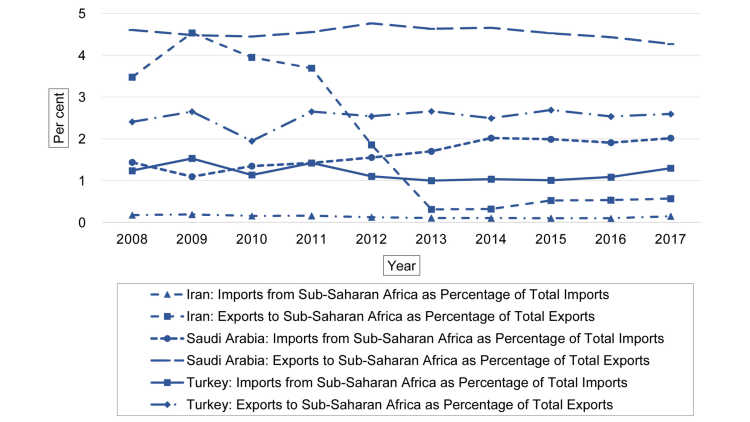
It is also particularly obvious in the Saudi case that Riyadh’s hegemonic ambitions in the Middle East are the main driver of its current foreign policy toward Africa, for it is mainly bent on containing its regional competitors and on using the continent’s resources to further its claim to leadership in the Middle East. But Riyadh’s latest moves have provoked strategic reactions from Ankara and Tehran. As a consequence, Africa is increasingly becoming a theatre of Middle Eastern conflicts.
Scholars of international relations have long ignored the meaning of regions for world politics, which have quite often been seen as merely another stage for great-power competition. There are still only a few approaches that account for the interest of systemic actors, including non-great powers, in a given region. According to one prominent rationale, extra-regional actors develop their interest in a region based on its importance for strengthening their position internationally and in their home region. Put differently, a region gains or loses in importance for external actors depending on its intrinsic, extrinsic, and negative value (Merom 2003).
Saudi Arabia’s Africa policy succumbs to this logic in many ways. First, official Saudi narratives regularly portray Africa as a region with negative value due to its importance to Riyadh’s adversaries. In fact, Africa only resurfaced on the Saudi agenda after Riyadh had fully realised its strategic meaning for Tehran and Ankara. In 2012, for instance, a Saudi diplomat applauded Riyadh’s turn to Africa, arguing that “as a result of our big absence we will lose the competition with other states if we miss the chance to powerfully penetrate Africa, which would only mean a natural geopolitical expansion to us” (Kabli 2012). Appraising Riyadh’s new Africa policy, the newly appointed minister for African affairs, Ahmad Qattan, recently stated, “we are now on the right track – the more so as we have not adapted ourselves to the African continent in the past decades as was necessary, providing an opportunity to others, some of which caused trouble and disturbance” (Al-Sharq al-Awsat 2018).
Second, and today more than ever, Riyadh considers Africa a region of intrinsic value owing to its vital resources. Elaborating on the reasons for Riyadh’s new comprehensive approach, which is geared toward all African states, Qattan emphasised Africa’s potential for the Saudi economy. But Africa’s resources are certainly not limited to economic gains. Riyadh relies heavily, for instance, on Sudanese and Somali forces in its military campaign in Yemen and is currently negotiating the deployment of Ugandan soldiers with Kampala. Furthermore, African partner states are supposed to back the Saudi position in diplomatic conflicts. They have also been cited as a source of prestige, supporting Riyadh’s claim to leadership in the Muslim world – for example, when they have joined the ranks of the Saudi-led Islamic Military Alliance to Fight Terrorism (IMAFT) or when they attended the Arab–Islamic American Summit during Trump’s visit to the kingdom in May 2017.
Third, Riyadh has eventually come to view Africa as a region of extrinsic value in that it is considered to have auxiliary potential for the defence of the homeland or for an offensive against competitors, including Turkey but most notably Iran. This strategic view is not restricted to the Red Sea region. For instance, Saudi Arabia recently pledged to financially support the Sahel Joint Military Force, a military offshoot of the G5 mandated to combat terrorism, organised crime, and human trafficking in Burkina Faso, Mali, Mauretania, Niger, and Chad. While this undertaking is also supported by the EU, Saudi Arabia’s support is widely seen as another indication of Riyadh’s determination to fight Iran. The same is true of Nigeria, where Riyadh has been trying to weaken the Islamic Movement funded by Tehran; of Senegal, where the kingdom has increased its funding for mosques run by Salafis to counter the influence of Iranian-financed educational institutions; or of South Africa, where Riyadh has also invested heavily in the country’s economy to unhinge South African–Iranian relations.
Yet Riyadh’s heightened engagement is provoking the stepping-up of Turkish and Iranian activities in return. The opening of a Turkish military base in Somalia as well as Ankara’s leasing of the Sudanese Suakin Island in the Red Sea in late 2017, for instance, may be interpreted as a response to preceding Saudi and Emirati moves. These steps, however, are considered to further compromise Arab security interests in what some commentators have labelled “the Arabian lake” (Wadiʿ 2017). This is even more so as Ankara has begun to coordinate its policies in the Red Sea with Qatar, which has been subject to an economic and political boycott by Saudi Arabia, Egypt, the UAE, and Bahrain since the beginning of the Gulf diplomatic row in 2017.
Iran, too, has again boosted its activities in Africa during Rouhani’s second term. Shortly after his re-election in May 2017, Foreign Minister Javad Zarif announced that, in addition to safeguarding its cultural, economic, and political interests, Tehran was determined to establish stability and security in Africa (IRNA 2017) – which can be read as a clear reference to recent Saudi engagement. In any case, the number of high-level Iranian officials visiting African states, including Rouhani himself, has increased notably ever since. Iran’s renewed focus on Africa has been further spurred by the de facto termination of the nuclear deal by the Trump administration and Tehran’s need to reinforce its economic ties with African states. Given these two developments, Africa’s strategic importance for Tehran has, according to Zarif, taken on “paramount significance.”
Consequences for Africa and Europe
The intensified competition between Middle Eastern regional powers does not bode well for peace and security in Africa, as a number of incidents have already shown. On the Djiboutian–Eritrean border, Riyadh’s diplomatic row with Qatar threatened to revive the armed conflict between Asmara and Djibouti when Qatari peacekeepers pulled out of the buffer zone without notice in 2017 after both countries had sided with Riyadh. In Somalia, the Middle Eastern regional powers’ struggle for influence is further unsettling the integrity of the federal state, increasing the likelihood of resurgent large-scale conflict. In Nigeria, the Saudi–Iranian conflict has contributed to violent clashes between the Saudi-backed Izala movement and the Iranian-backed Islamic movement. These and other incidents have justifiably raised fears that Africa is about to become a new theatre for Middle Eastern conflicts. Moreover, and beyond proxy wars, the Middle Eastern powers’ pouring of money into the continent to curry favour with African states provides local regimes with new resources to campaign against internal or external foes – at a time when inter-state contestation has emerged “as an important feature of the African political landscape” (World Peace Foundation 2016: 16).
The newly increased engagement of Middle Eastern regional powers in Africa also contradicts the aims of the EU’s foreign policy in many ways. Without much doubt, Middle Eastern conflicts will continue to reverberate across the continent and contribute to destabilising the countries affected. This will also impact migration dynamics in sub-Saharan Africa, which according to the UN Refugee Agency already hosts more than 26 per cent of the world’s refugee population (UNHCR n.d.). In addition, the granting of development aid without conditions regarding, for instance, good governance, which is a common Saudi practice, thwarts the overall aims of EU foreign, security, and development policy, particularly the EU’s comprehensive Cotonou Agreement and the Africa–EU Strategic Partnership. Needless to say, it also undermines the German government’s “Marshall Plan with Africa.”
The EU must therefore be alert to these developments and anticipate their repercussions. It should seek to further mend its strained relations with African partners, acknowledging that, alongside China, Middle Eastern states have become important new actors in Africa. In fact, their overtures, financial or otherwise, might initially appear to be more attractive to local governments than those of the EU. But they often come with strings attached. The EU should therefore dwell on its strengths, including its position as a reliable partner, and push for increased cooperation in areas of mutual interest, especially in the realms of security, education, and the economy. It should meet its African partners on equal terms, and take their concerns and needs seriously. This includes working toward reducing trade imbalances, and thus an overhaul of the EU agricultural subsidies system, which continues to strain the EU–Africa relationship.
Fußnoten
Literatur
Al-Sharq al-Awsat (2018), Qattan: Ghayyarna athar al-qalaqil wa-l-mataʿib fi afriqiya [Qattan: We Changed the Causes of Trouble and Disturbance in Africa], 14 September, https://bit.ly/2NGBpBn (6 October 2018).
Central Bank of the Republic of Turkey (n.d.), www.tcmb.gov.tr/wps/wcm/con nect/en/tcmb+en (3 October 2018).
Daily Sabah (2018), Latest Leg of Erdoğan’s Africa Tour to Mark New Firsts, 25 February, www.dailysabah.com/diplomacy/2018/02/26/latest-leg-of-erdog ans-africa-tour-to-mark-new-firsts-1519595203 (3 October 2018).
Demirci, Zuahl, and Fatih Hafiz Mehmet (2018), Turkey in Intense Cooperation with Africa, in: Anadolu Agency, 10 February, www.aa.com.tr/en/africa/turkey-in-intense-cooperation-with-africa-/1059565 (4 October 2018).
IMF Database (various years), http://data.imf.org/regular.aspx?key=61013712 (3 October 2018).
IRNA (Islamic Republic News Agency) (2017), Zarif: Promoting Ties with Africa Iran’s Priority, 24 May, www.irna.ir/en/News/82543960 (3 October 2018).
Kabli, Saʿud (2012), Siyasatna al-kharijiyya fi afriqiya [Our Foreign Policy in Africa], in: al-Watan, 29 July (1 October 2018).
Korkut, Umut, and Ilke Civelekoglu (2013), Becoming a Regional Power while Pursuing Material Gains, in: International Journal, 68, 1, 187–203.
Lob, Eric (2016), The Islamic Republic of Iran’s Foreign Policy and Construction Jihad’s Developmental Activities in Sub-Saharan Africa, in: The International Journal of Middle East Studies, 48, 2, 313–338.
Merom, Gil (2003), Realist Hypotheses on Regional Peace, in: Journal of Strategic Studies, 26, 1, 109–135.
Nouhou, Alhadji Bouba (2014), L’Iran et l’Afrique: Une coopération à l’épreuve des faits, in: Confluences Méditerranée, 90, 3, 141–151.
OECD Database (n.d.), https://stats.oecd.org (3 October 2018).
Raymond, Paul, and Jack Watling (2015), The Iranian-Saudi Proxy Wars Come to Mali, in: Foreign Policy, 19 August, http://foreignpolicy.com/2015/08/19/the-iran-saudi-proxy-wars-come-to-mali-shiite-sunni-islam/ (1 October 2016).
Sounaye, Abdoulaye (2017), Salafi Revolution in West Africa, Working Paper, 19, Berlin: Zentrum Moderner Orient.
UNHCR (n.d.), Africa, www.unhcr.org/africa.html (10 October 2018).
Wadiʿ, Muhammad (2017), Al-matamiʿ al-iqlimiyya tastawajib istratijiyyat ʿarabiyya jadida fi-l-bahr al-ahmar [Regional Endeavors Necessitate New Arab Strategies in the Red Sea], in: al-ʿArab, 13 January, 10511, 6.
Wikileaks (n.d.), The Saudi Cables: Cables and Other Documents from the Kingdom of Saudi Arabia Ministry of Foreign Affairs, see Doc#117636, https://wikileaks.org/saudi-cables/ (3 October 2018).
World Peace Foundation (2016), African Politics, African Peace: Report Submitted to the African Union, Medford, MA: World Peace Foundation.
Gesamtredaktion GIGA Focus
Redaktion GIGA Focus Nahost
Lektorat GIGA Focus Nahost
Regionalinstitute
Forschungsschwerpunkte
Wie man diesen Artikel zitiert
Heibach, Jens (2018), Ein weiterer Wettlauf: Warum sich nahöstliche Regionalmächte in Afrika engagieren, GIGA Focus Nahost, 5, Hamburg: German Institute for Global and Area Studies (GIGA), http://nbn-resolving.de/urn:nbn:de:0168-ssoar-60553-9
Impressum
Der GIGA Focus ist eine Open-Access-Publikation. Sie kann kostenfrei im Internet gelesen und heruntergeladen werden unter www.giga-hamburg.de/de/publikationen/giga-focus und darf gemäß den Bedingungen der Creative-Commons-Lizenz Attribution-No Derivative Works 3.0 frei vervielfältigt, verbreitet und öffentlich zugänglich gemacht werden. Dies umfasst insbesondere: korrekte Angabe der Erstveröffentlichung als GIGA Focus, keine Bearbeitung oder Kürzung.
Das German Institute for Global and Area Studies (GIGA) – Leibniz-Institut für Globale und Regionale Studien in Hamburg gibt Focus-Reihen zu Afrika, Asien, Lateinamerika, Nahost und zu globalen Fragen heraus. Der GIGA Focus wird vom GIGA redaktionell gestaltet. Die vertretenen Auffassungen stellen die der Autorinnen und Autoren und nicht unbedingt die des Instituts dar. Die Verfassenden sind für den Inhalt ihrer Beiträge verantwortlich. Irrtümer und Auslassungen bleiben vorbehalten. Das GIGA und die Autorinnen und Autoren haften nicht für Richtigkeit und Vollständigkeit oder für Konsequenzen, die sich aus der Nutzung der bereitgestellten Informationen ergeben.






